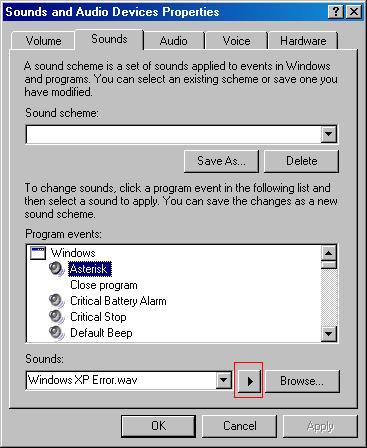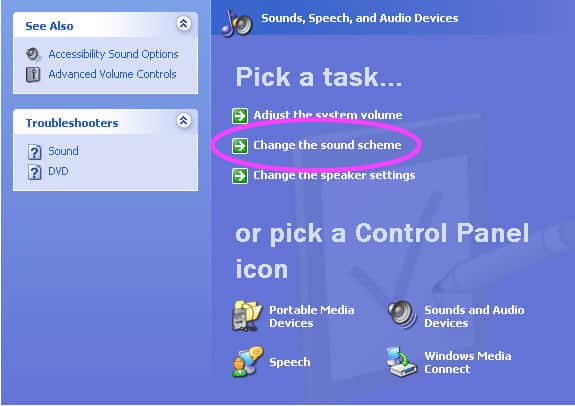

- #WINDOWS XP SOUNDS AND AUDIO DEVICES HOW TO#
- #WINDOWS XP SOUNDS AND AUDIO DEVICES PORTABLE#
- #WINDOWS XP SOUNDS AND AUDIO DEVICES PLUS#
- #WINDOWS XP SOUNDS AND AUDIO DEVICES WINDOWS#
If the Sound, Video, And Game Controllers listing does not exist, it means that Windows doesn’t know that your system has a sound card in it. Keep in mind that it’s possible that this section may not even exist.
#WINDOWS XP SOUNDS AND AUDIO DEVICES PLUS#
As you browse through the Device Manager list, click the plus sign next to Sound, Video, And Game Controllers. The Device Manager is a utility that allows you to interact directly with any hardware on your system. When you see the System Properties sheet, select the Hardware tab and click the Device Manager button. To begin the diagnostic process, open the Control Panel, and then click on the System icon. In this section, I’ll show you several different ways that you can troubleshoot your sound card using Windows XP.Ī sound card is one of the more difficult hardware components to troubleshoot because Windows treats this one single hardware device as multiple hardware devices, each with its own resources. If you’ve tested your speakers and verified that your PC's volume isn’t muted or turned way down, then it could be that your problem is with the sound card and not with the speakers. Some sound cards have very misleading markings to indicate what device gets plugged into each port.

If you still can’t hear any sound from your computer, try experimenting with plugging the speakers into different ports. Now, close the Volume Control and try again to play a sound. When the Volume Control is open, verify that all levels are somewhere in the middle, that the balance is set to the center, and nothing has been muted. Before attempting to play any sound, select the All Programs | Accessories | Entertainment | Volume Control commands from the Start menu. Once you’ve verified that your speakers are functional, reconnect them to your computer’s sound card. If there is still no sound, it could be that your speaker wire has shorted out or that you’ve somehow managed to blow your speakers. Finally, double check to make sure that the speakers are plugged in and that the volume level is adequate. You should also verify that the speakers are receiving power.

If no sound is present, temporarily disconnect the speakers and verify that sound is coming from the boom box when the speakers are disconnected. After adjusting the sound controls on the speakers and the player, you should hear sound through your computer speakers.
#WINDOWS XP SOUNDS AND AUDIO DEVICES PORTABLE#
The easiest method of testing your speakers is to plug your computer speakers directly into a headphone jack of a portable radio or CD player. If you aren’t hearing any sound at all, then it’s quite possible that your sound card or speakers could be to blame. As you do, be sure to try to play back several different audio formats so that you can get a feel for what is and isn’t working. If you don’t have a sound card that ships with its own diagnostic program, then you’ll have to resort to using the Windows Media Player to test system audio. This utility allows you to test your speakers, the sound card, and several media formats with a few simple mouse clicks. If you’re lucky enough to have a Creative Labs Sound Blaster product, then you’ll be happy to know that the Sound Blaster ships with a program called Creative Diagnostics. Unfortunately, Windows XP doesn’t come with a component that’s specifically designed to test your system’s sound.

If you’re having multimedia playback problems, the first thing that I recommend checking is your sound card and your speakers.
#WINDOWS XP SOUNDS AND AUDIO DEVICES HOW TO#
This article takes a look at how to troubleshoot some of the many sound card problems that can occur in Windows XP. In spite of Microsoft’s efforts to make Windows XP as stable as possible, the OS still has problems, particularly with multimedia files that require a sound card because they are system resource hogs. However, the old rule that the more complex something is, the more likely that it is to malfunction, still applies. Windows XP comes bundled with more new multimedia features than previous Windows operating systems.


 0 kommentar(er)
0 kommentar(er)
